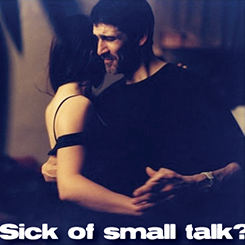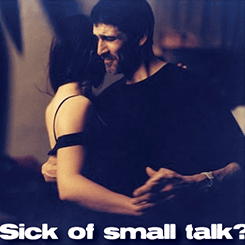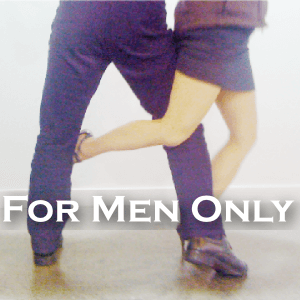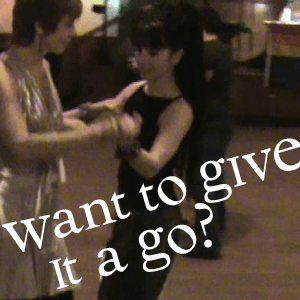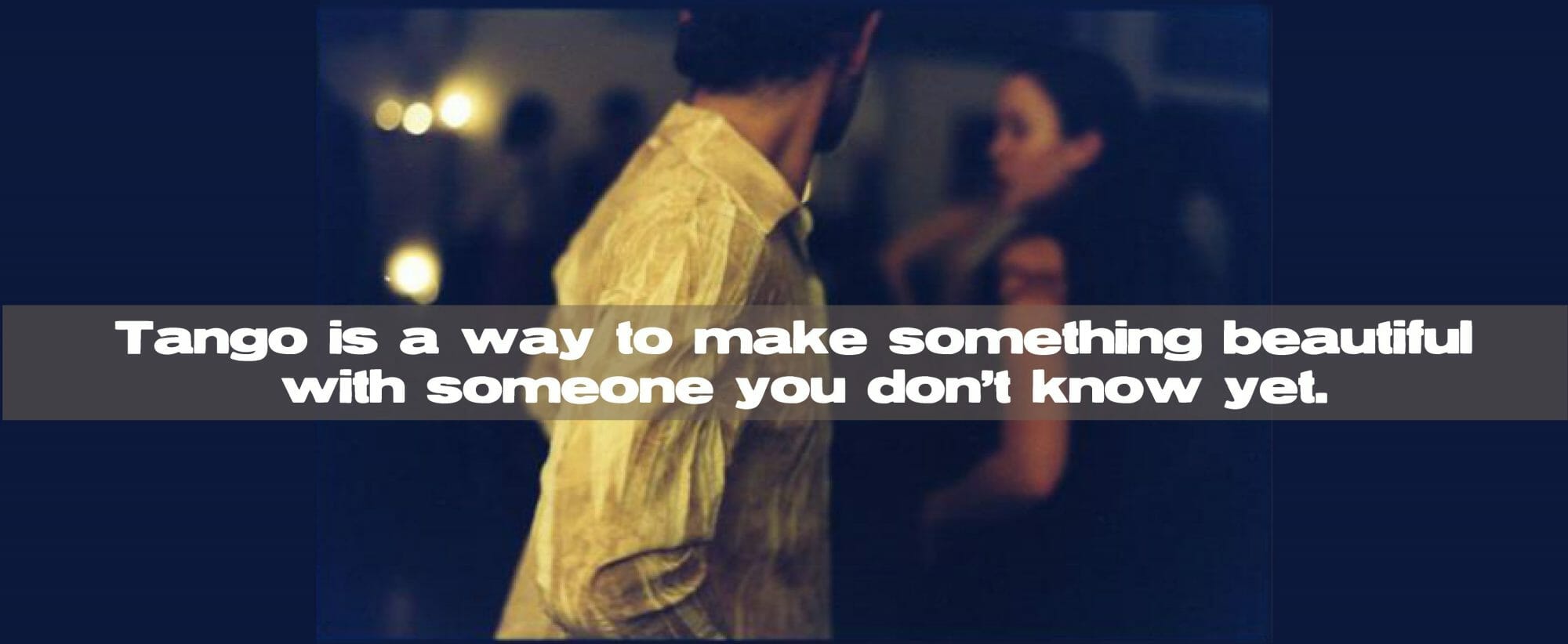How to ask someone to dance (the cabeceo) at a milonga:
- The Argentine style of asking for a dance is that the leaders ask. They ask in a particular way, often from across the room, by seeking eye contact with followers. If eye contact is held, the leader nods toward the dance floor (or raises one or both eyebrows). If the follower wishes to accept the dance, they smile and return the nod slightly, maintaining eye contact. They can then meet, or the leader will come to get the follower. Having accepted a dance, the follower owes the next tanda to that leader.
- If the follower does not want to accept the dance, they look away. If a follower does not want to dance with a certain person, the follower is careful not to make eye contact with them. If a follower does not feel like dancing at all, they communicate unavailability by not making eyes available. They can watch the dancers or have a conversation.
- This method of asking and answering protects the leaders from public rejection, it’s an important part of the codigos (codes) of tango.
- Of course this all gets a bit more complicated for people who both lead and follow. In mixed settings, men may assume all women are followers. In a gay setting, if followers ask for dances, the person they are asking may not be clear what they are asking for. For this reason, it may be best in queer settings to maintain the tradition of leaders asking for dances. If the askee does not wish to follow, they should not accept the dance. If two people who both lead and follow lock eyes, presumably the first to issue a cabeceo (nod), will be the leader for that tanda. If two followers lock eyes, there will be no cabaceo. If two leaders lock and one gives the cabeceo, the other may avert their eyes. Remember, if you accept another’s nod, you have agreed to follow.
- Once a cabeceo has been accepted you have a contract to dance the next song with each other. No matter what happens, you cannot change direction and dance with another partner. Even if someone stops to talk with you, you need to hustle to your partner. (Everyone understands this, so it’s not considered rude.)
- People who both lead and follow may swap the lead during a dance or tanda. However, in order to avoid an embarrassing and/or dangerous situation on the dance floor, they must negotiate a consensual change in leading before doing it.
- Some dancers do not know or do not use the cabeceo. As a result, leaders walk up to followers and ask them verbally. Because we want to avoid making a public rejection, followers should and usually do accept a dance. To reject is to humiliate the leader. So if someone asks you directly, please make sure they know what it is and how to use it. You should expect them to use it with in the future, and don’t feel bad turning them down if they don’t.
- In some cities, followers ask leaders to dance. There are good reasons to wait for leaders to initiate dances. Since they have to structure the dance, they need to like the music, they need to feel comfortable with the crowdedness of the dance floor, and they need to be rested and feeling creative after their previous dance. It’s best to let them decide when they are ready. But most importantly, they need to feel moved — by this music, that partner, this moment. Remember that leaders are creating a piece of art that will never be repeated, and they’re going to do it for you, when they feel it. If you demand it, you’re getting commissioned artwork, and it’s not going to be anything like what it could be if the leader (and the follower) for the ineffable combination of creativity and divine spark to move the leader.
See our complete Etiquette Guide to the Codigos and Beyond.

